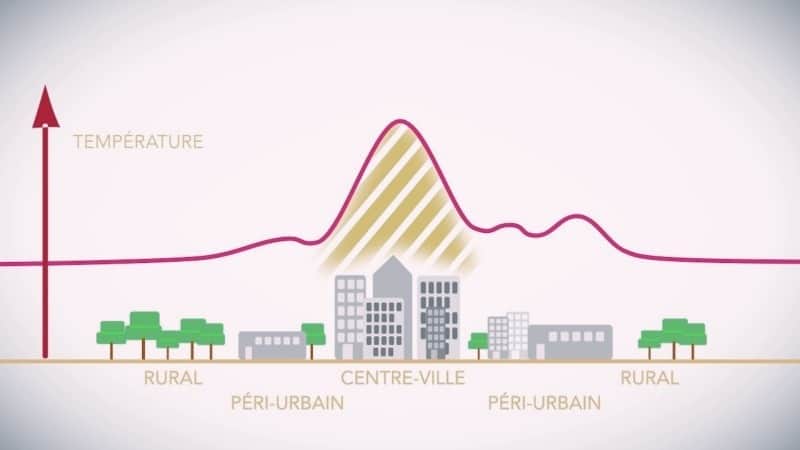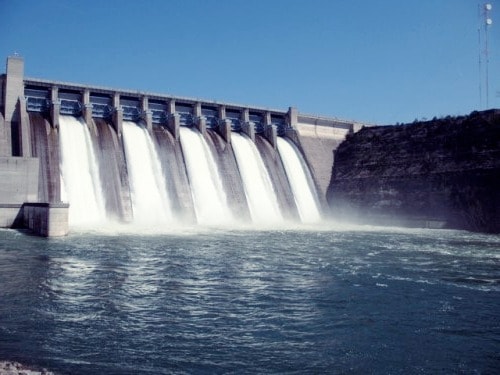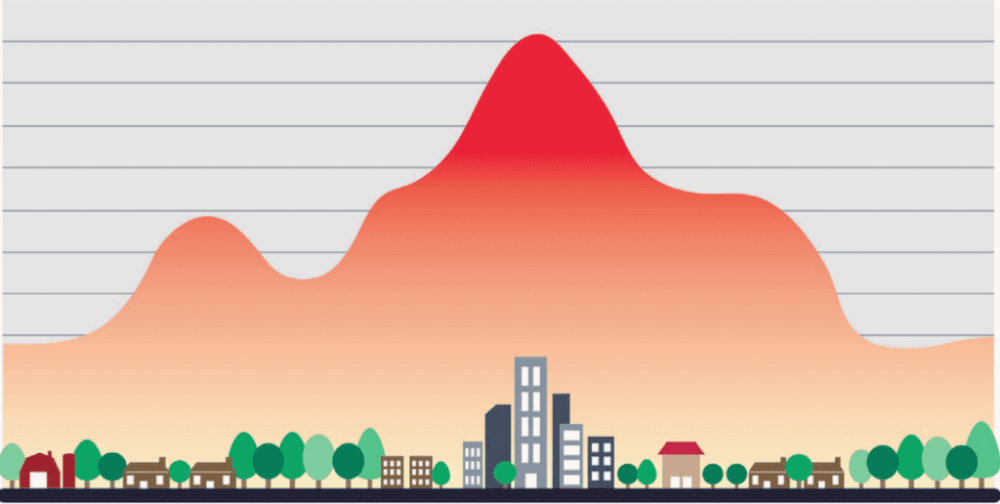Urban heat islands can have adverse impacts on the environment and human health.
Impacts on the environment
Deterioration of outdoor air quality
Urban heat islands contribute to the formation of smog. Composed of fine particles and ground-level ozone, it is formed when sunlight, heat and pollutants (nitrogen oxides (NOx) and volatile organic compounds (VOC)) react. In most of the world’s major cities, Montreal and Quebec City are no exception, there is an increase in smog episodes, even in winter.
Indoor Air Quality Deterioration

Heat has an effect on indoor air quality because it promotes the growth of dust mites, mould and bacteria. In addition, certain toxic substances, such as formaldehydes, contained in glues used in the manufacture of furniture and building materials, are released during high heat.
Rising energy demand
Indoor air cooling and refrigeration requirements are leading to an increase in energy demand. In Québec, most electricity is produced by hydroelectric facilities, which has the advantage of producing very few GHGs, unlike other places in the world where fossil fuels such as oil and coal are still used.

Toutefois, il ne faut pas croire que l’hydroélectricité n’est pas sans impacts sur l’environnement et la biodiversité. En effet, en noyant de vastes territoires forestiers capteurs de carbone, les grands réservoirs créés par les barrages finissent par dégager du méthane et sont donc émetteurs de GES.
Increasing demand for drinking water
The increase in the number and duration of heat islands has already and will continue to increase the demand for drinking water, for cooling (e.g. swimming pools and water features) or for maintaining landscaping. But there is no excuse to wash your car or driveway with water!
L’eau est trop précieuse pour la gaspiller pour ce genre de choses.
Impacts on health
During hot weather, urban heat islands can create what is known as heat stress for some people. This can manifest itself as discomfort, weakness, loss of consciousness, cramps, syncope, heat stroke, and even increase pre-existing chronic diseases such as diabetes, respiratory failure, cardiovascular, cerebrovascular, neurological and renal diseases, which can lead to death.
Some people are more vulnerable, such as people with chronic illnesses, people who live alone and are socially isolated, the elderly, infants and very young children, outdoor workers, people with low socioeconomic status, high-level outdoor athletes and people with chronic or mental health conditions.
The problem has become so important that the World Health Organization (WHO) has recommended that health agencies in many countries implement urban heat island programmes and strategies. Including in Quebec!


